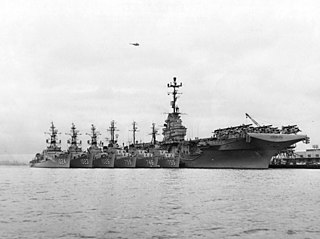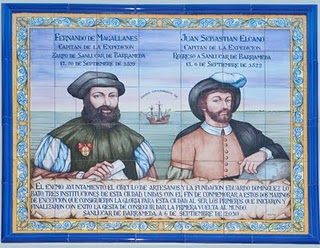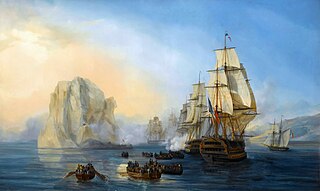Ayas Nautical research club was founded in 1985. The range of its activities is quite wide, including historical aspects of World and Armenian navigation and shipbuilding, reconstruction of ancient Armenian vessels, study of sea routes, old maps, navigation devices, banners, collecting data on Armenian navigators, making underwater archaeological surveys and research. Since 1985 the Club has organized 15 exhibitions and has carried out several surveys on Armenian navigation. 26 different types of vessels used in historical Armenia, were restored and reconstructed. Members of the Club permanently participate in international conferences on underwater archaeology and nautical history and have published a number of articles.
 W
WThe United States Naval Academy is a federal service academy adjacent to Annapolis, Maryland. Established on 10 October 1845, under Secretary of the Navy George Bancroft, it is the second oldest of the five U.S. service academies, and educates officers for commissioning primarily into the United States Navy and United States Marine Corps. The 338-acre (137 ha) campus is located on the former grounds of Fort Severn at the confluence of the Severn River and Chesapeake Bay in Anne Arundel County, 33 miles (53 km) east of Washington, D.C., and 26 miles (42 km) southeast of Baltimore. The entire campus is a National Historic Landmark and home to many historic sites, buildings, and monuments. It replaced Philadelphia Naval Asylum, in Philadelphia, that served as the first United States Naval Academy from 1838 to 1845, when the Naval Academy formed in Annapolis.
 W
WDuring the Dutch Revolt (1568–1648), the Dunkirkers or Dunkirk Privateers were commerce raiders in the service of the Spanish monarchy. They were also part of the Dunkirk fleet, which consequently was a part of the Spanish monarchy's Flemish fleet (Armada de Flandes). The Dunkirkers operated from the ports of the Flemish coast: Nieuwpoort, Ostend, and Dunkirk. Throughout the Eighty Years' War, the fleet of the Dutch Republic repeatedly tried to destroy the Dunkirkers. The first Dunkirkers sailed a group of warships outfitted by the Spanish government, but non-government investment in privateering soon led to a more numerous fleet of privately owned and outfitted warships.
 W
WEric's Tales of the Sea is a one-man stage performance by "Eric" which has been presented in the United Kingdom and Australia at Fringe festivals, comedy festivals and special events. During the show, Eric discusses his experiences as a submariner and member of the Royal Navy with the audience, within the limitations of the Official Secrets Act. In 2009, The Guardian described the show as a "compendium of extraordinary naval yarns" which includes encounters with sharks and near-death experiences during submarine escape training and exercises. In 2012 the show played at the Edinburgh Fringe. In 2016 and 2017 the show played at the Adelaide Fringe Festival and included projected photographs from Eric's naval career and occasional diagrams and quotations.
 W
WThe Hattendorf Prize for Distinguished Original Research in Maritime History is awarded by the United States Naval War College for distinguished academic achievement in publishing original research that contributes to a deeper historical understanding of the broad context and interrelationships involved in the roles, contributions, limitations, and uses of the sea services in history. The prize is awarded approximately every two years and consists of a $10,000 cash prize, a specially designed bronze medal, and a citation. The Prize Laureate is expected to deliver a lecture at the United States Naval War College on the occasion of the award.
 W
WHunter-killer Groups, also known as Convoy Support Groups, were groups of anti-submarine warships that were actively deployed to attack submarines during World War II. The advances in signals intelligence such as High-frequency direction finding, in cryptological intelligence such as Ultra, and in detection technologies such as radar and sonar/ASDIC enabled the Allied navies to form flotillas designed actively to hunt down submarines and sink them. Similar groups also existed during the Cold War. A hunter-killer group would typically be formed around an escort carrier to provide aerial reconnaissance and air cover, with a number of corvettes, destroyers, destroyer escorts, frigates, and/or United States Coast Guard Cutters armed with depth charges and Hedgehog anti-submarine mortars.
 W
WThroughout naval history during times of war battles, blockades, and other patrol missions would often result in the capture of enemy ships or those of a neutral country. If a ship proved to be a valuable prize efforts would sometimes be made to capture the vessel while inflicting the least amount of damage as was practically possible. Both military and merchant ships were captured, often renamed, and then used in the service of the capturing country's navy, or in many cases sold to private individuals who would break them up for salvage, or use them as merchant vessels, whaling ships, slave ships, or the like. As an incentive to search far and wide for enemy ships, the proceeds of the sale of the vessels and their cargoes were divided up as prize money among the officers and crew of capturing crew members with the distribution governed by regulations the captor vessel's government had established. Throughout the 1800s war prize laws were established to help opposing countries settle claims amicably. Private ships were also authorized by various countries at war through a Letter of marque, legally allowing a ship and commander to engage and capture vessels belonging to enemy countries. In these cases contracts between the owners of the vessels on the one hand, and the captains and the crews on the other, established the distribution of the proceeds from captures.
 W
WThis is a list of ships sunk by missiles. Ships have been sunk by unguided projectiles for many centuries, but the introduction of guided missiles during World War II changed the dynamics of naval warfare. 1943 saw the first ships to be sunk by guided weapons, launched from aircraft, although it was not until 1967 that a ship was sunk by a missile launched from a ship outside a test environment. Both of these were warships, but missiles have also attacked merchant ships. More than fifty other vessels have been sunk, in war and in peace.
 W
WThe Machine in Neptune's Garden: Historical Perspectives on Technology and the Marine Environment is a 2004 book edited by Helen M. Rozwadowski and David K. van Keuren. The book takes its name from Leo Marx's influential book The Machine in the Garden. It is a product of the Maury III conference on the history of oceanography held in Monterey, California in 2001. It argues the centrality of technology to the acquisition of knowledge of the oceans and contains ten thematically linked essays on the indispensable role of technology in the history of ocean science. It "demonstrate[s] that historians of science and technology should pay more attention to the history and historiography of oceanography." It is the most prominent work combining the history of technology, environmental history, and history of ocean sciences, and it is considered a foundational work in history of technology of the oceans and in the history of the marine environment.
 W
WAlfred Thayer Mahan was a United States naval officer and historian, whom John Keegan called "the most important American strategist of the nineteenth century." His book The Influence of Sea Power Upon History, 1660–1783 (1890) won immediate recognition, especially in Europe, and with its successor, The Influence of Sea Power Upon the French Revolution and Empire, 1793–1812 (1892), made him world-famous and perhaps the most influential American author of the nineteenth century.
 W
WThe man-of-war was a Royal Navy expression for a powerful warship or frigate from the 16th to the 19th century. Although the term never acquired a specific meaning, it was usually reserved for a ship armed with cannon and propelled primarily by sails, as opposed to a galley which is propelled primarily by oars.
 W
WNaval warfare is combat in and on the sea, the ocean, or any other battlespace involving a major body of water such as a large lake or wide river. Mankind has fought battles on the sea for more than 3,000 years. Even in the interior of large landmasses, transportation before the advent of extensive railroads was largely dependent upon rivers, canals, and other navigable waterways.
 W
WThe Oxford Encyclopedia of Maritime History, John B. Hattendorf, editor in chief, was published by Oxford University Press in 2007. The work was issued in four volumes in print and online in the Oxford Digital Library. The encyclopedia is devoted to global maritime history and contains some 1.6 million words in more than 950 articles written by more than 400 authors in nearly 50 countries.
 W
WPre-dreadnought battleships were sea-going battleships built between the mid- to late- 1880s and 1905, before the launch of HMS Dreadnought in 1906. The pre-dreadnought ships replaced the ironclad battleships of the 1870s and 1880s. Built from steel, protected by case-hardened steel armour, and powered by coal-fired triple-expansion steam engines, pre-dreadnought battleships carried a main battery of very heavy guns in fully-enclosed rotating turrets supported by one or more secondary batteries of lighter weapons.
 W
WSanlúcar de Barrameda 2019–2022 is a program of events in Spain and Portugal, to be held between 2019 and 2022 in commemoration of the five hundredth anniversary of Ferdinand Magellan's circumnavigation of the Earth. Events will be co-ordinated via an organisation located in Sanlúcar de Barrameda (Cádiz) in Spain.
 W
W W
WSteam frigates, also known as screw frigates, the larger screw ship of the lines and the smaller steam corvettes, steam sloops, steam gunboats and steam schooners, were steam-powered warships that were not meant to stand in the line of battle. The first such ships were paddle steamers. Later on the invention of screw propulsion enabled construction of steam-powered versions of the traditional frigates, corvettes, and sloops.
 W
WInformally, a stone frigate is a naval establishment on land. The term has its origin in Britain's Royal Navy after its use of Diamond Rock, an island off Martinique, as a 'sloop of war' to harass the French in 1803–04. The command of this first stone frigate was given to Commodore Hood's first lieutenant, James Wilkes Maurice, who, with cannon taken off the Commodore's ship, manned it with a crew of 120 until its capture by the French in the Battle of Diamond Rock in 1805.
 W
WThe Washington Naval Conference was a disarmament conference called by the United States and held in Washington, DC from November 12, 1921 to February 6, 1922. It was conducted outside the auspices of the League of Nations. It was attended by nine nations regarding interests in the Pacific Ocean and East Asia. Germany was not invited to the conference, as it had already been disarmed under the terms of the Versailles Treaty. Soviet Russia was also not invited to the conference. It was the first arms control conference in history, and is still studied by political scientists as a model for a successful disarmament movement.